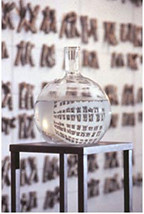A five-day residential course in “Oral History in the History of Medicine” will be given at the University of Manchester 26-30 March 2007. The course is intended for postgraduates and others who are interested in using oral history to explore the history of medicine and offers a mix of theoretical perspectives and practical sessions.
As well as a review of oral history in the history of medicine and its potential uses, there are workshop sessions on project design, undertaking and evaluating interviews, and analysing and writing history from oral histories. There will also be presentations on memory, ethics and copyright, and transcribing and archiving.

 on culture and society. Suzanne Anker, visual artist and theorist, will facilitate this online discussion. Anker teaches art history and theory at the School of Visual Arts in New York where she is chair and editor of
on culture and society. Suzanne Anker, visual artist and theorist, will facilitate this online discussion. Anker teaches art history and theory at the School of Visual Arts in New York where she is chair and editor of 